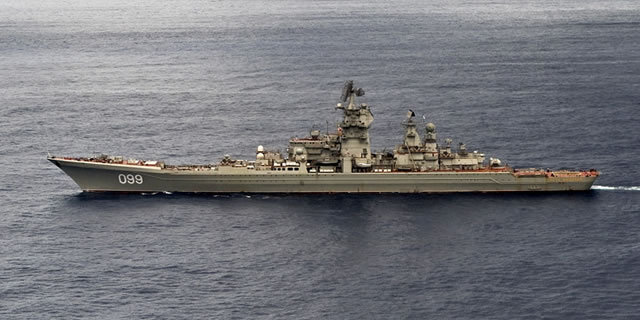Breaking news
Russia Continues Tests of 3M22 Zircon - Hypersonic Missile Reached Mach 8 Speed.
| 2017
|
|
|||
 Pyotr Veliky (Peter the Great) heavy nuclear-powered missile cruiser (TARKR), the fourth Kirov class cruiser of the Russian Navy. Pyotr Veliky (Peter the Great) heavy nuclear-powered missile cruiser (TARKR), the fourth Kirov class cruiser of the Russian Navy. |
|||
|
|
|||
|
"Experts warn the unstoppable missiles could spell disaster for the Navy's new £6.2 billion aircraft carriers… But with no method of protecting themselves against missiles like the Tsirkon, the carrier would have to stay out of range, hundreds of miles out at sea. That would make it impossible for the carrier's jets and helicopters to reach their target, carry out their mission, and return without running out of fuel - effectively rendering them useless," the Mirror’s article said.
The Daily Mail, in turn, warmed that the missile could fly at a speed of 7,400 km/h - six times faster than sonic speed. "Current Navy anti-missile defenses are only equipped to shoot down projectiles traveling 2,300mph, meaning they would be useless against the Tsirkon. The 'unstoppable' projectile could spell disaster for the Navy's… aircraft carriers," the article explained. The Daily Star called the Tsirkon a "game changer." "The lethal missile - which can be fired from land, sea and submarines - can reportedly cover 155 miles in just 2.5 minutes, which is faster than a bullet from sniper's rifle," it said. Early media reports on the development of the Tsirkon cropped up in February 2011. Some presumed for want of an official confirmation that the BrahMos-II antimissile system was the Tsirkon’s export version. There had been an assumption before 2012 that the Tsirkon was a successor to the Bolid system from NPO Mashinostroyenia as well. NPO Mashinostroyenia set up a team of project engineers in 2011. The weapon’s preliminary design was complete the same year, as were the preliminary designs of the subsystems of the missile. A division of UPKB Detal did some of the job. The development of the hypersonic missile system is scheduled for completion before 2020, according to the Military Russia web portal. Later on, the media have reported that the Tsirkon program was either discontinued or altered. No proof has been offered, but it is possible that it is the closure of the program due to technical problems that prompted the government to propose that the Raduga Design Bureau and NPO Mashinostroyenia pool their efforts to work on hypersonic missile development, according to the Gazeta.ru website. © Copyright 2017 TASS. All rights reserved. This material may not be published, broadcast, rewritten or redistributed. |
|||






























